Christmas brings out the best and the worst in me. It’s a chance to give in to my inclination to feed all my nearest and dearest at once, and also to show off a bit. I love the prep, from the shopping lists to the veg peeling, and I love the wind-down, from the leftovers to the decimated tins of chocolates. Am I controlling about Christmas? Yes, probably. But it all comes from a place of overexcitement.
This year, however, Christmas looks a little different. On Christmas Day itself, I am likely to be 40 weeks pregnant with my first baby. This means that not only am I not masterminding Christmas dinner and all the rigmarole that comes with it, but neither will I be able to do a lot of the things that have always made Christmas for me. I won’t be driving home to Newcastle, or partaking in our annual tradition of drinking the local pub dry on Boxing Day. I can’t sit through a pantomime, present shopping has been almost exclusively online, and I have yet to stay awake through a whole Christmas film. A pram now stands where we might otherwise have had a tree.
I am trying to embrace simplicity in our festivities, and focus on the smaller parts of Christmas that are still open to me. But it would be wrong to say that I am relinquishing control entirely. Ho ho ho, no. I have majored in delegation, and there is a substantial cheese board on order that I expect to be brought to me as soon as the baby arrives, along with just enough of the Christmassy essentials to ensure that I can be kept in leftover sandwiches. I intend to be sustained by freezer canapés until well into the new year.
That said, I am making a trifle. In my current state, I’m not sure I could bear Christmas without a trifle in the fridge. Apart from the fact that trifle probably tops my list of puddings and that we rarely have it other than at Christmas, it is simple to make — even for a heavily pregnant woman. It’s significantly easier than a Christmas pud or mince pies. The mere idea of kneading a stollen or whisking a sponge for a yule log is enough to send me into early labour.
A trifle is mostly an assembly job. It is best left to soak and settle once made, only improving as the ingredients get to know one another. It is one of those dishes that I will return to time and time again, never tiring of it until the serving bowl is scraped clean. If we find ourselves indisposed on Christmas Day itself, I have no doubt that the trifle will only be better on our return.
Trifle recipes are as varied as family Christmas traditions — and it’s difficult to be prescriptive about a dish with a name that means ‘something frivolous or whimsical’. In the 17th century when it originated, the term ‘trifle’ was used interchangeably with that of the fruit fool and sometimes the syllabub, so there is no ‘authentic’ or ‘original’ trifle which we can use as a blueprint.
The very earliest recipe has no fruit at all, and instead was a sweetened, boiled cream flavoured with ginger and rosewater, far more reminiscent of a fool. A later recipe introduced bread at the base, moistened with sherry, taking us closer to what we would recognise today, but explicitly called it a fool. It wasn’t until 1751 and the publication of Hannah Glasse’s The Art of Cookery Made Plain and Easy that a recipe was published under the term ‘trifle’ and was identifiable as such to modern diners. Since then, trifles have featured every fruit under the sun, all sitting pretty under custards and curds, jellies and blancmanges. They have been laced with booze that should probably have remained languishing at the back of the cupboard, and garnished with everything from candied coriander seeds and acid-green angelica to hundreds and thousands.
But this is what I think of as a classic trifle. I haven’t messed around with any of the traditional constituents. Trifle sponges sit at the bottom, soaking up glugs of sherry. A Melba-esque mixture of raspberries and peaches sits above, sinking slightly into the sponge. I’ve given instructions for a proper custard, but you needn’t make your own — just use a thick shop-bought one. And then on the top, plenty of softly whipped cream, topped with toasted flaked almonds. No twists, no flourishes, just a perfect trifle.
Serves 8 / Takes 30 mins
For the custard
400ml whole milk
½ tsp vanilla paste
3 egg yolks
50g caster sugar
20g cornflour
For the trifle
160g trifle sponges
100ml sherry
325g raspberries
1 tbsp caster sugar
400g tinned peaches
For the topping
300ml double cream
2 tbsp caster sugar
½ tsp vanilla paste
30g flaked almonds
- First, make the custard. Heat the milk and vanilla paste together in a saucepan until steaming. In a bowl, whisk the egg yolks and caster sugar until thick, then whisk in the cornflour.
- Pour a little of the steaming milk into the egg yolk mixture to loosen it, then return to the pan and cook, stirring, until you see thick bubbles. Scrape into a bowl, cover with clingfilm that touches the surface and leave to cool.
- Lay the sponges in the bottom of the trifle bowl and pour the sherry over.
- Take 100g of the raspberries, and heat them with the tablespoon of caster sugar and a splash of water, until they start to break down and give up their juices. Pour them over the sponges, followed by the uncooked raspberries.
- Drain the tinned peaches and slice any large ones into slimmer segments. Scatter these over the raspberries.
- When the custard is completely cool, remove the clingfilm and whisk until it is smooth. Spoon on top of the fruit.
- Place the cream, two tablespoons of caster sugar and vanilla paste into a large bowl, and whisk to medium peaks. Spoon on top of the custard and gently smooth into an even layer.
- Place the flaked almonds in a pan in a single layer over a medium heat until golden. Once cool, scatter them generously over the top of the cream.
Got something to add? Join the discussion and comment below.
Get 10 issues for just $10
Subscribe to The Spectator Australia today for the next 10 magazine issues, plus full online access, for just $10.
You might disagree with half of it, but you’ll enjoy reading all of it. Try your first month for free, then just $2 a week for the remainder of your first year.


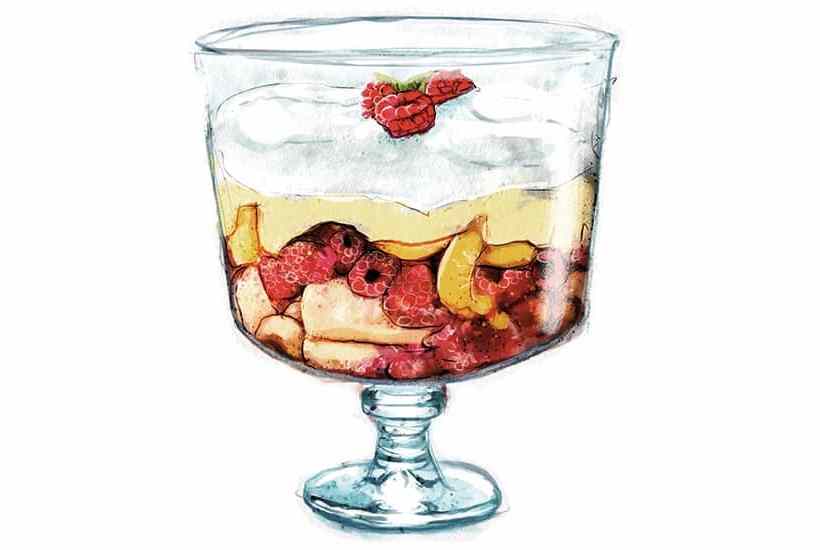
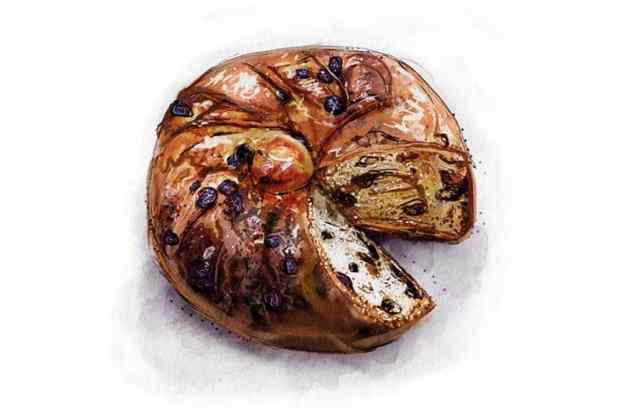
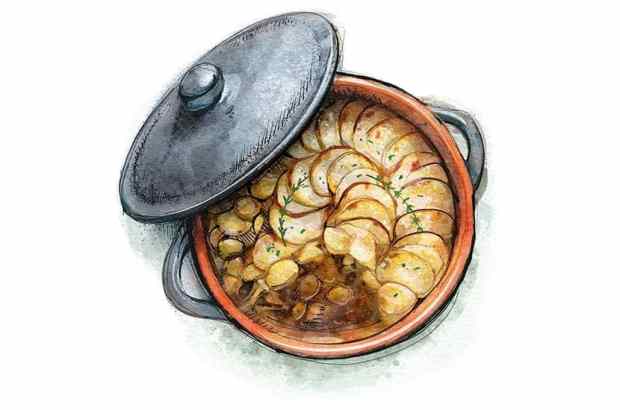
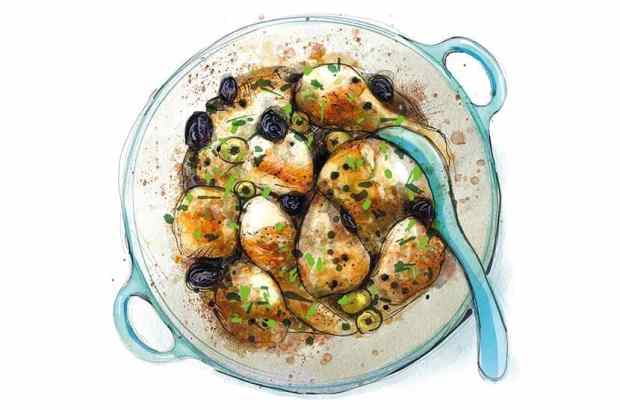
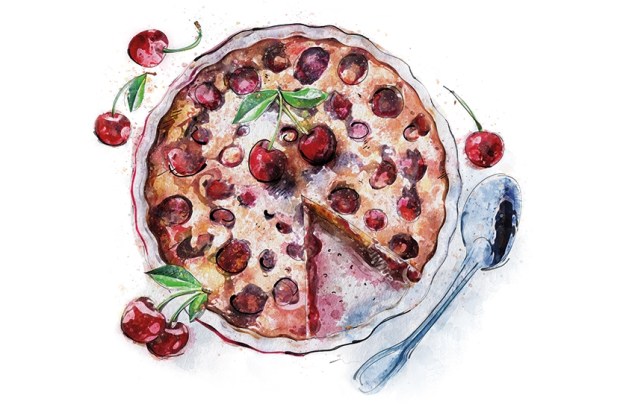








Comments
Don't miss out
Join the conversation with other Spectator Australia readers. Subscribe to leave a comment.
SUBSCRIBEAlready a subscriber? Log in